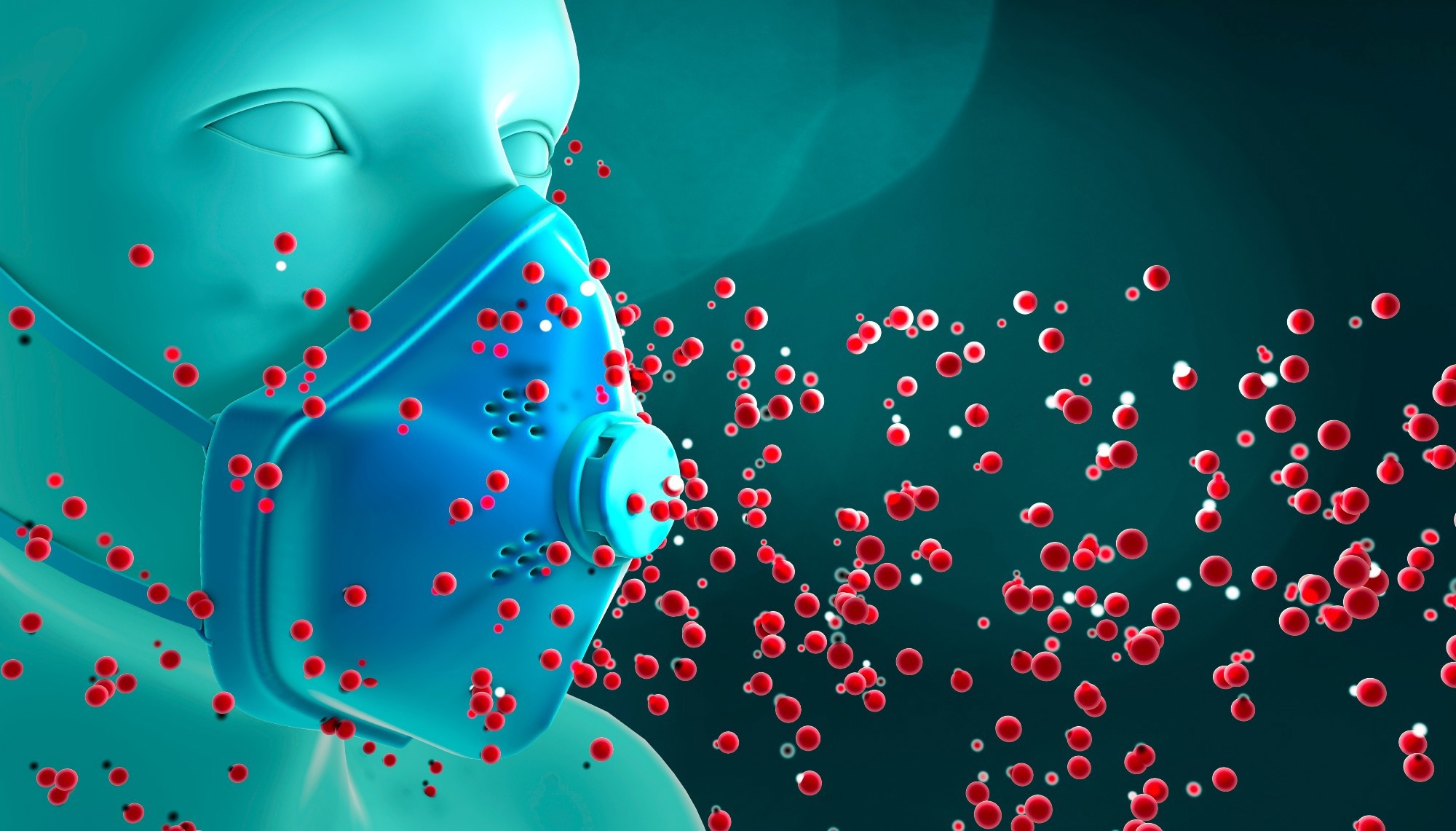SARS-CoV-2 has been detected in the air in several healthcare settings involved in managing COVID-19 patients with SARS-CoV-2 nosocomial transmission reported among healthcare workers (HCWs) and patients throughout the coronavirus disease 2019 (COVID-19) pandemic. As a result, AGPs have seemed risky, and thereby measures have been enforced to limit their applications in healthcare settings; however, the factors that facilitate nosocomial SARS-CoV-2 transmission have not been completely understood.
 Study: The aerobiology of SARS-CoV-2 in UK hospitals and the impact of aerosol generating procedures. Image Credit: Naeblys / Shutterstock
Study: The aerobiology of SARS-CoV-2 in UK hospitals and the impact of aerosol generating procedures. Image Credit: Naeblys / Shutterstock

 *Important notice: medRxiv publishes preliminary scientific reports that are not peer-reviewed and, therefore, should not be regarded as conclusive, guide clinical practice/health-related behavior, or treated as established information.
*Important notice: medRxiv publishes preliminary scientific reports that are not peer-reviewed and, therefore, should not be regarded as conclusive, guide clinical practice/health-related behavior, or treated as established information.
About the study
In the present study, researchers assessed the prevalence of aerosolized SARS-CoV-2 in the rooms of SARS-CoV-2-positive patients requiring AGP or oxygen supplementation compared to those on room air.
Air samples were prospectively obtained from the rooms of hospitalized COVID-19 patients at two tertiary care hospitals in the UK between November 2020 and October 2021, and the SARS-CoV-2 variants dominant in that period were Alpha and Delta variants. Samples were divided into three categories as (i) room samples; COVID-19 patients not undergoing respiratory therapy, (ii) oxygen; patients who were provided oxygen supplementation at flow rates of <15L/min via nasal mask/cannulae, and (iii) AGP; COVID-19 patients undergoing AGP procedures.
A portable air sampler was used to collect air samples at a minimum distance of 1.5 meters from COVID-19 patients to ensure that aerosols were captured and to minimize the collection of large droplets. Subsequently, RNA was extracted from the samples using quantitative revere transcription-polymerase chain reaction (RT-qPCR), and cell culture experiments were performed using Vero E6 cells. Binomial generalized linear modeling (GLM) was used for the analysis.
In addition, databases such as Medline, Pubmed, Embase, and Web of Science were searched for air sampling studies published between January 2020 and November 2021. The search terms used were “SARS-CoV-2”, “COVID-19”, “indoor air quality,” “air sampler,” “indoor airborne,” and “bioaerosol,” as a result of which 326 studies were initially obtained; however, after the abstract screening, only 37 full-text research papers were considered for the review.
Results
In total, the team obtained 219 samples from the rooms of COVID-19 patients, of which 67, 65, and 67 belonged to the room air group, oxygen supplementation group, and the AGP procedure group, respectively. SARS-CoV-2 RNA was identified in 25% (n=54) of the samples, the most significant prevalence of which in patient rooms with room air, oxygen supplementation, and AGP procedures was (22%, n=15), (32%, n=21), and (21%, n=18), respectively.
The probability of an air sample being SARS-CoV-2-positive was unaffected by procedures, and there were no differences in Ct (cycle threshold) values for COVID-19 samples between procedures. However, a reduction in the SARS-CoV-2 spike (S) gene, which indicated Alpha presence, was observed in comparison to other targets of the SARS-CoV-2 genome targets [nucleocapsid (N) gene and open reading frame 1 (ORF1) gene] in the RT-qPCR analysis.
The average Ct values obtained for room air, AGP, and oxygen supplementation samples were 34, 32, and 33, respectively, and the cultures observed for every sample were negative. No effect was observed in the days elapsed since symptom onset and the Ct values or SARS-CoV-2 RNA detection frequencies. Further, no correlation was observed between the RT-qPCR reports and the sampling location [e.g., critical care units or emergency departments (ED)].
Notably, no significant differences were observed in positive reports between the oxygen group and room air group when sampled in regular ventilation sites instead of enhanced ventilation sites [relative risk (RR) for the oxygen supplementation group and the room air patient group was 1.2 and 1.1, respectively]. Further, SARS-CoV-2 RNA was identified in five of the additional 16 air samples collected from sites occupied by or utilized by COVID-19 patients [such as nursing stations and bathrooms] or those adjacent to such sites.
For the additional samples, negative cultures and overgrowth of fungi were observed among bathroom samples. Two samples collected from the bathrooms and nursing stations each were positive for SARS-CoV-2 RNA. The remaining SARS-CoV-2 RNA-positive air sample was obtained from an ITU (intensive therapy unit) bay. Of the samples, five were collected from nursing stations within red zones, one from an area adjacent to a red zone, and two from hospital wards’ nursing stations located >3 meters away from the rooms of SARS-CoV-2-positive patients.
Ct values among the five samples ranged between 22 (spike gene) at a nursing station where samples were positive for all SARS-CoV-2 genes tested and 35 (for a single gene) among SARS-CoV-2 RNA-positive samples obtained from nursing stations and shared bathrooms. In addition, the SARS-CoV-2 RNA-positive sample obtained from the ITU bay showed SARS-CoV-2 ORF1 and N gene positivity.
Overall, the study findings showed SARS-CoV-2 RNA present in the air of hospitalized COVID-19 patient rooms, which was not influenced by AGPs. The results indicate that the risk of SARS-CoV-2 transmission via aerosols is probably equally significant for all rooms included in COVID-19 patient management, and appropriate infection prevention and control measures should be recommended.

 *Important notice: medRxiv publishes preliminary scientific reports that are not peer-reviewed and, therefore, should not be regarded as conclusive, guide clinical practice/health-related behavior, or treated as established information.
*Important notice: medRxiv publishes preliminary scientific reports that are not peer-reviewed and, therefore, should not be regarded as conclusive, guide clinical practice/health-related behavior, or treated as established information.